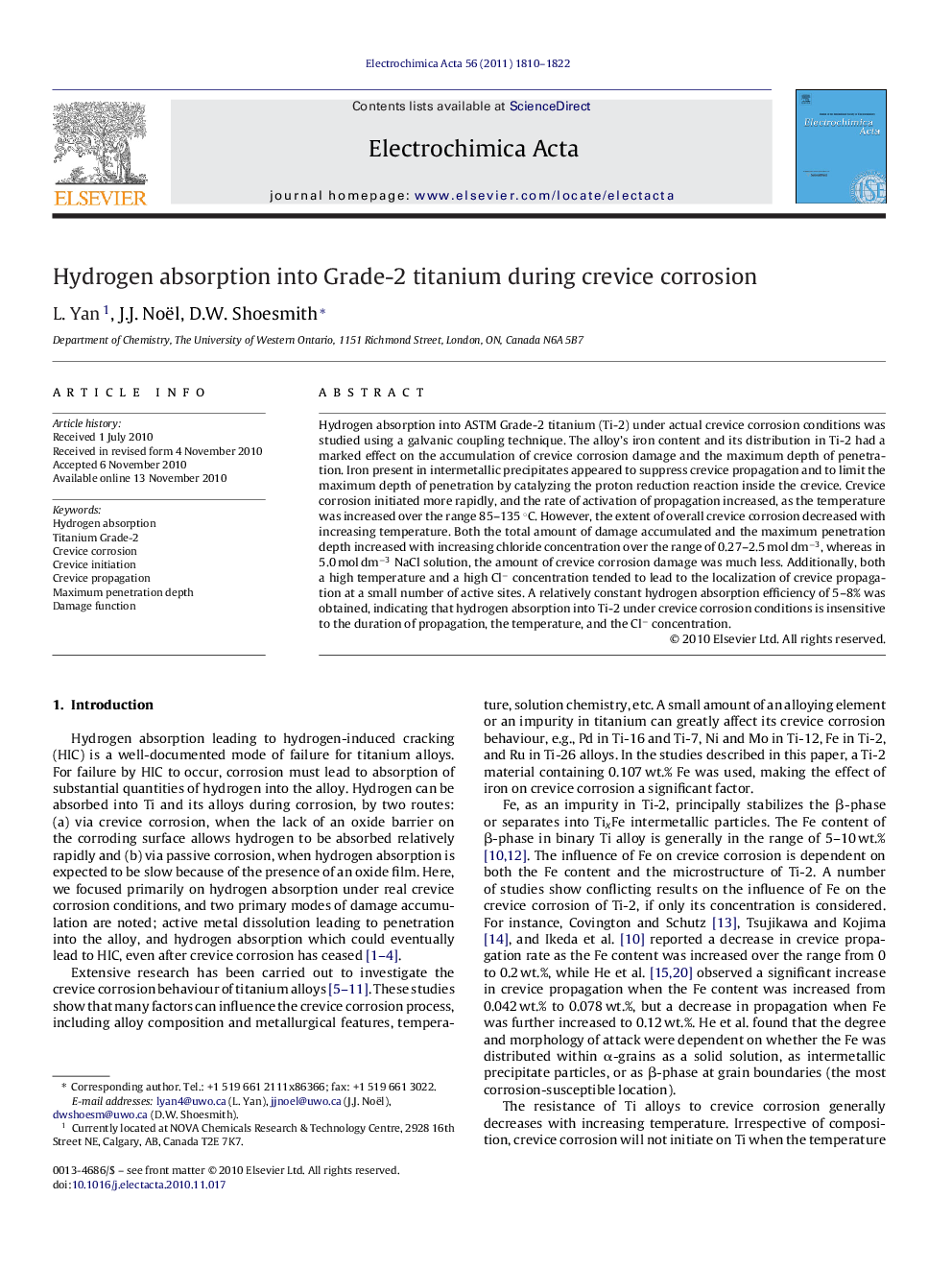| کد مقاله | کد نشریه | سال انتشار | مقاله انگلیسی | نسخه تمام متن |
|---|---|---|---|---|
| 190778 | 459707 | 2011 | 13 صفحه PDF | دانلود رایگان |

Hydrogen absorption into ASTM Grade-2 titanium (Ti-2) under actual crevice corrosion conditions was studied using a galvanic coupling technique. The alloy's iron content and its distribution in Ti-2 had a marked effect on the accumulation of crevice corrosion damage and the maximum depth of penetration. Iron present in intermetallic precipitates appeared to suppress crevice propagation and to limit the maximum depth of penetration by catalyzing the proton reduction reaction inside the crevice. Crevice corrosion initiated more rapidly, and the rate of activation of propagation increased, as the temperature was increased over the range 85–135 °C. However, the extent of overall crevice corrosion decreased with increasing temperature. Both the total amount of damage accumulated and the maximum penetration depth increased with increasing chloride concentration over the range of 0.27–2.5 mol dm−3, whereas in 5.0 mol dm−3 NaCl solution, the amount of crevice corrosion damage was much less. Additionally, both a high temperature and a high Cl− concentration tended to lead to the localization of crevice propagation at a small number of active sites. A relatively constant hydrogen absorption efficiency of 5–8% was obtained, indicating that hydrogen absorption into Ti-2 under crevice corrosion conditions is insensitive to the duration of propagation, the temperature, and the Cl− concentration.
Journal: Electrochimica Acta - Volume 56, Issue 4, 15 January 2011, Pages 1810–1822